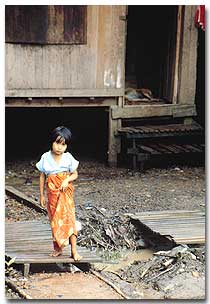The following criteria were drawn from the PROMUEBA informal settlement upgrading program in Caracas, Venezuela, and also were used in Recife, Brazil, in their programs.
Socioeconomic and health situation: Settlements with critical poverty as evaluated by appropriate socioeconomic indicators, and a high-incidence of waterborne diseases rate high in need to upgrade.
Level of community organization: The stronger the organization the easier will be the process - particularly in participatory approaches - and potentially more successful the outcome.
Land tenure: Those on land belonging to the state or other public bodies are better to select, than those on invaded private land which will face legal obstacles and will delay implementation. (See also Land Readjustment as practiced in Thailand.)
Settlements in high risk areas: These are avoided because they would require removal and resettlement of a large portion of the residents. Steep-slope areas which would require installation of new access roads and resultant displacement of families are also included in this group.
Land use constraints: Settlements in areas set-aside by law for a specific use should be avoided.
Overriding public interest: When located in areas that are earmarked for large infrastructure of city-wide interest, it is unwise to upgrade these areas.
Existence of trunk infrastructure: Areas near existing spare capacity of trunk infrastructure should receive priority, since investments will be more cost effective.

